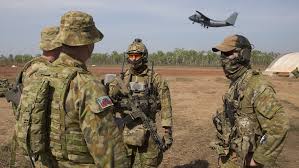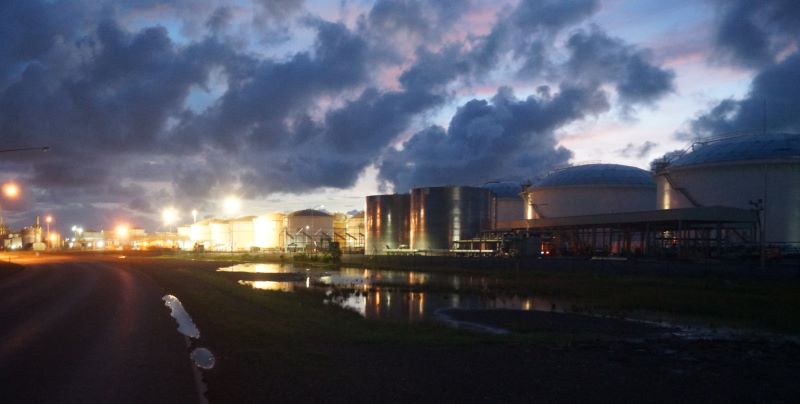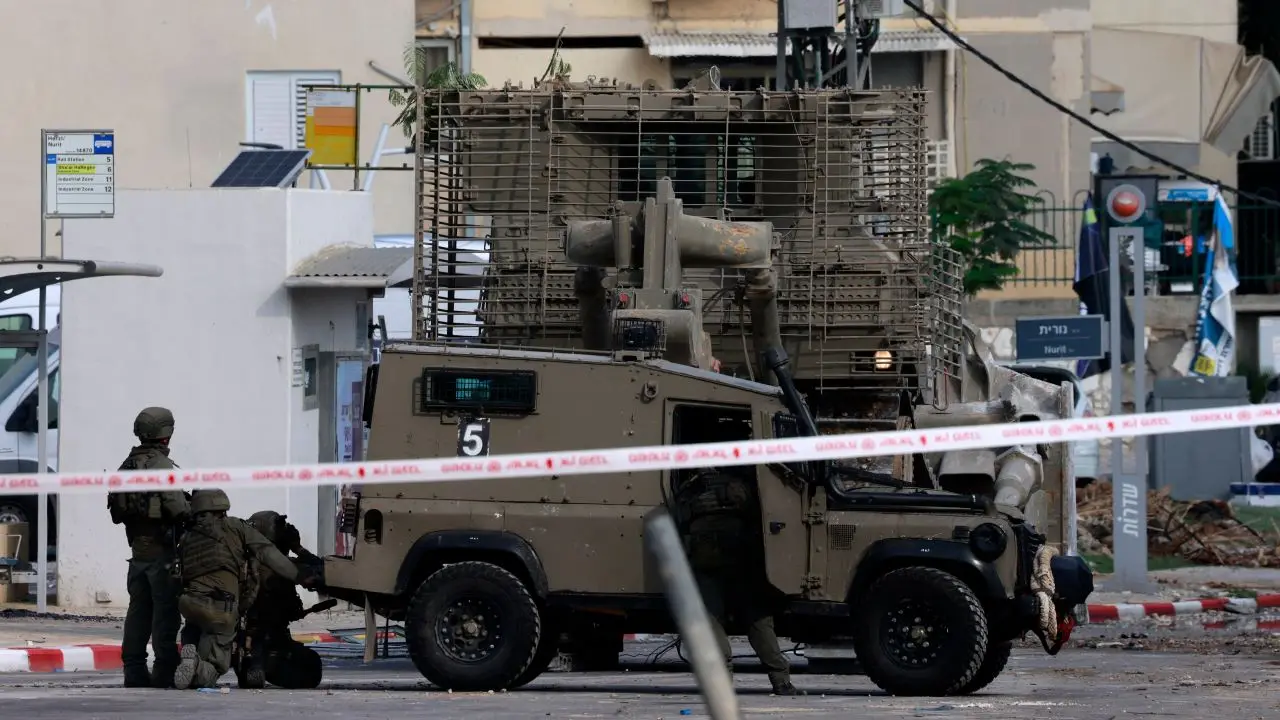
Exercise Pitch Black 2022 invaded the Top End of the NT
It took over our land, water and skies. Included in the madness were NATO planes and service personnel from several European countries. The USA has become the colonising Master and has embedded our mainstream media.
When Pitch Black stopped for 2022 on September 8, more naval war rehearsals continued the onslaught in the seas off northern Australia.
Osprey Helicopter Crash in 2023
On 27 August 2023, three US Marines stationed in Darwin as part of the US Force Posture Rotation, died after an Osprey helicopter crashed on Melville Island north of Darwin. The war game this time was called Predators’ Run. The military helicopter crashed kilometres away from a primary school at Pickertaramoor.
Since 2010 there have been numerous mechanical failures with Osprey helicopters but PM Albanese insists our troops must stand ‘shoulder to shoulder’ with US-allied troops to support our ‘shared’ national interests.
[Media Release 17 June 2024]
Is the US Force with Us?
- There is general concern about dangerous military exercises in the Top End
- Poorly-maintained Ospreys in particular are flying low over residential areas and should not be flying at all
- Residents are angry about US military disrespect for local rules and feel unsafe as US forces take over Australian Country
- Public consultation processes on expanding military initiatives are divisive and out-of-date
- Do we need war with China or is trade the best way forward towards peace?
Top End Peace Alliance (TEPA) representatives have met with local and federal politicians to voice public concerns of the increasing highly destructive foreign military build-up in the Top End and the effect this has on our health and general well-being as well as that of our unique and vulnerable natural environment.
In an article from the LA Times on the 12 June, 2024, ‘The [US] military’s hundreds of V-22 Ospreys will not be permitted to fly their full range of missions until at least 2025….Vice Adm. Carl Chebi, head of U.S. Naval Air Systems Command, which has responsibility for the aircraft militarywide, told lawmakers at a House oversight hearing into a series of recent crashes that it will be at least another six to nine months before the command will be able to complete all of the safety and performance assessments for the Osprey’.

G lives at Tumbling Waters – approximately 10 kilometres as the crow flies from Kangaroo Flats Training Area (KFTA) – and has spoken with senior ADF officials about low-flying Ospreys and other low-flying military aircraft in his rural area for several years. G has been clear that, as ex-RAAF, he accepts that the ADF has to carry out training exercises in the defence of Australia but that they should be carried out under strict safety and noise regulations. According to G, ‘Australia is an independent country and shouldn’t risk Australian lives just to please the Yanks’.
Darwin River resident, L, recollects that Kangaroo Flats was once used by Norforce as a rifle range. ‘Now’, she reflects, ‘the Army needs it as a military base as part of the US Force Posture Initiative. The noise costs us our sanity as well as millions of taxpayer dollars for a simple rifle range to be upgraded into a large, noisy and pollutive US military base. I’ve talked to my local politician about this and how hard it is to be living here without being able to have a proper say about the changes made at Kangaroo Flats’.
J lives at Millner not far from the north-south runway of Darwin Airport and the RAAF Base. In the past week of military activity to and from the Base, she has recorded excessive flight noise. On 16 June 2024 J stated, ‘We have the Ospreys flying low over our house and the jets also, measuring decibels at 70 -85, at the upper limit of what is acceptable. Certainly impacting mental health and amenity. I measured one jet today and max was 100 decibels during take-off. This wasn’t the worst one either’.
B, now living in Rapid Creek, previously lived at the Solar Village Humpty Doo for 2 years. B regularly visits the Solar Village and is shocked at the noise and vibrations coming from Mt Bundy Training Area’s heavy artillery fire during military exercises. ‘I have a young daughter, I feel she has no future here, and we are not safe in the NT. I love the Top End, it’s ecologically significant and I worry about impacts and pollution from all the military activity. I worry daily about the massive military buildup as well as an expansion of gas mining, my home has become a sacrifice zone. These beautiful landscapes and its people deserve better’.
According to ANU’s David Lindenmeyer and Nick Zentelis in ‘Bombing for Biodiversity’, Australia has increased its military training area (MTA) estate by more than a million hectares since the early 1990s. ‘While the primary purpose of MTAs will always be military training, their large area, global distribution and representativeness, means they are likely to have significant environmental and conservation values’.
Training facilities repeatedly use live-fire training shooting ranges and this leads to consistent site-specific degradation and contamination. The most common and extensive live-fire training is on small arms ranges associated with extensive heavy metal contamination.

TEPA is concerned about the noise and contamination from operations at ADF and US Force Posture facilities across the Top End and how this affects people and native wildlife. Potential fuel leaks from the US Military Fuel Tanks at East Arm are a case in point.
Poor environmental planning at US military instillations around the world is a common theme. Groundwater contamination here would have catastrophic consequences.
J, an Indigenous custodian living at Daly Waters, was concerned by US and Australian troops coming unannounced last year for military exercises. He does not want this to happen again because it frightened women and children and adds to violence and intimidation by the Jovi Boys from nearby communities. ‘Some military men wanted our airstrip for their planes. People are still getting over the Intervention and empty apologies for this. We don’t want this kind of oppression again’.
Recently, the Independent Member for Goyder, published on her facebook page her disgust of the USDF and its disrespect of Territorians’ rights. ‘I am fully supportive of our military doing what they do in the Territory and Australia, however, I am getting fed up with the “god damn Yanks” and their collective disregard for what are considered the rules of use of air space’.
Diana Rickard, Peace Educator at TEPA stated, ‘the lack of consultation with Top End visitors, residents and workers in the line of fire from military air, road and sea exercises, faulty Ospreys, faulty US fuel tanks and fired-up foreign troops not willing to follow our rules, customs or respect for safety and peaceful amenity is not acceptable’.
Ms Rickard disputes what the Australian Defence Minister, Richard Marles refers to as ‘shared values and interests’ between the US military elite and Australians. ‘I can see no benefit in relinquishing Australian sovereignty for the dangerous national interests of the USA by allowing USDF officials to set up and administer US Rotational Force bases on Australian soil under the US Force Posture Agreement.
‘Does Australia need a war with China just to help sell more killing machines to more military allies or would we prefer to continue to be an important trading partner with China? We can’t have it both ways’.
TEPA stands united with local residents protesting the dangerous and invasive US-led military exercises held over our land, water and sky and we call on our governments to
- Stop any further foreign military incursions that destroy Country, peaceful amenity and right of access to public places by peaceful local people, visitors and workers.
- Respect the right of people and wildlife to live within a healthy environment
- Provide a strong, educative, peaceful pathway for rational debate and freedom of expression to be practised.
Is supporting war companies in the Australian National Interest?
The Australian Labor Government is carrying on billion dollar support of war industries. Is this in the national interest? The Australian Government uses borrowed money to buy deadly-offensive war toys instead of spending money on lowering emissions causing catastrophic climate change. Our national interest is beginning to look shaky. The Government has restricted essential health services, ignored people living in poverty and those made homeless through rising rents by negative-gearing landlords and given more tax cuts to the Rich. I’m beginning to feel lost in where the interests really are.
Australia should remain defensive not offensive. This is more cost-effective than remaining indebted to the US and UK for war toys that aren’t even available yet. It also ensures continued support from our essential trading partners.
The Northern Territory – from Pine Gap to the RAAF Base in Darwin – is fast becoming the USA’s place to play expensive and deadly wargames that make us a target for those with nuclear weapons ready for action.
Diana Rickard
27/11/2022
A question of War
We do live in a very unique location.
Connected geographically to the rest of the world, Darwin is my home. I love multi-cultural Darwin. With its mutual respect and the NT’s integral shared culture, we can visit many places of the world in our own city.
Here, we have it all.
I was born in Canada, spent my early childhood in Germany and lived in many different locations of Australia choosing to settle in this area.
Darwin being in such a unique position has physically felt the effects of war in 1942. My uncle speaks of being evacuated to Balaclava South Australia as a small child. He was from Katherine, 310 kilometres away when bombs fell on Darwin, killing 235 people and injuring up to 400. Civil and military facilities were destroyed as well as ships and aircraft. In the meantime, my grandfather was enlisted in the Australian Defence force on his way to fight in PNG.
On the other side of the world my father huddled in air raid shelters only 5 years old. He told me stories of seeing bodies floating in rivers and rummaging through the neighbours’ trash to find potato peels his mother could make soup from, digging in fields to collect grains that mice had collected for the winter to make bread.
My father was born in Leipzig, Germany in 1938, air raids a regular occurrence, the sound of air raid sirens blaring the norm. After an air attack in December 1943 a fire storm eventuated, fire hoses did not fit the custom-made connections to the hydrants and the water supply broke down quickly. More than 1800 people were killed. Churches, factories, homes, schools etc all destroyed. In another major air raid in 1944, 970 died and all amongst smaller raids.

One hundred and forty thousand people were left homeless and to put that into perspective the approximate population of Darwin.
I can name other areas of the world that suffered horribly from war from all sides and I am sure we all have our own stories to tell how war has affected us.
The world is changing at a tremendous pace and weapons of war have advanced to unimaginable proportions.
I will now speak of the present as the past has brought us here.
The deployment of Nuclear capable bombers to Katherine which are crucial to US strike capability marks a significant escalation to the militarising of Australia, the Indo – Pacific Region and the world. The US National Security Strategy recently proclaimed a “decisive decade of geopolitical conflict between the major powers”. It declared that “the ability to deploy US air force bombers to Australia sends a strong message to adversaries about our ability to project lethal air power“.
We are in a very convenient location, aren’t we?
Meanwhile the US is building eleven giant jet fuel tanks in Darwin and the Joint US-Australia Pine Gap facility in Alice Springs is also undergoing expansion.
In a recent ABC Four Corners report Becca Waser of the Centre for new American Security went on to declare that: ….” Darwin would inevitably be a target in any US war between China and Australia.”
This is real.
As The Australian newspaper pointed out recently: “The drumbeats of potential war are sounding across the world. This is not alarmist, it’s reality”.
I am not a fatalist. War can be prevented and diplomacy is a must. We live in such a beautiful multi-cultural environment in harmony and in appreciation of each other’s cultures. We in Darwin embrace culture. We learn from each other and see that respect and a peaceful world is possible, as we live it.
The plans to dispatch B-52s has not been discussed in parliament, has been not publicly announced and no public consultation given.
Australia is a nuclear-free nation state, so the contradictions are very alarming given the B-52s’ nuclear capabilities and the recent AUKUS alliance. Under this pact Australia is acquiring nuclear powered submarines – again – what a contradiction!
I am a member of the Darwin community and I am not clapping or smiling at the warplanes overhead while watching the sunset on Mindil Beach as shown in the 4 Corners report: https://www.abc.net.au/news/2022-10-31/war-games:-what-would-conflict-with-china-mean-for/101598584. The economic boost from War is not something to be embraced.
Because the Lord Mayor of Darwin said on the 4 corners program that he welcomed US soldiers to Darwin, I am asking questions as a citizen as follows:
Darwin is not out of reach of intercontinental ballistic missiles that have the range to carry a nuclear bomb over 5500 kilometres. This poses a very real risk to civilian life and infrastructure. Has the Darwin City Council established a strategy in this regard?
We have strategy and plans in place for cyclones as I have read your climate emergency strategy. Should we establish similar and start creating air raid shelters, sirens and warnings at what to do in case of a nuclear strike?
Please forgive my pessimism and sarcasm. I doubt anything will be done. Ignorance and denial may be the best policy! I am sure the regional economic plan does not include preparing for WW3! Imagine what that would do to our tourism industry? And – I’m not sure how our unique location would attract any one to come to live in the Northern Territory with the threat of nuclear fallout imminent.
I am asking for further discussion on this item.
Let’s promote peace, I believe this this is the best strategy.
Ingrid Schreiner
Missiles for Peace
Australia has just taken another step, as part of the AUKUS agreement with the US and the UK, that is leading us towards an event that should be unthinkable – involvement in a major war against China.
On Tuesday 16 January, Acting Defence Minister Pat Conroy announced a $37 million contract with Lockheed Martin Australia to begin the manufacturing in Australia in 2025 of GMLRS (Guided Multiple Launch Rocket System) rockets, which have a range of around 70 kilometres. Australia will also purchase the longer range (over 500 kilometres) Precision Strike Missiles (PrSM), and will join the development program to extend their range to around 1000 kilometres in the future.
Lockheed Martin Australia’s parent company, Lockheed Martin, is the world’s biggest weapons maker, 90% of its revenue coming from weapons sales. Like other weapons companies, Lockheed Martin relies on wars and threats of wars for its existence. Its stocks rose almost immediately after the October 7 attacks by Hamas on Israeli civilians, its fighter jets being among those that are currently destroying Gaza. The company has profited greatly from the wars in Ukraine and Afghanistan and elsewhere.

While Minister Conroy reassured us that this investment “is contributing to peace and stability in the Indo-Pacific”, long range weapons for Australia are, on the contrary, likely to have significant negative implications for peace (but very favourable impacts on Lockheed Martin’s bottom line). It should be noted also that while $37 million is small fry in terms of weapons programs, the government plans to spend $4.1 billion across the forward estimates on long range strike and missile manufacturing.
The official narrative with new weapons program announcements has become very familiar – we live in dangerous times, we face aggression from others and we have no choice but to deter attack by being better armed than any adversary, especially China. The narrative comes to a full stop at that point. There is no discussion as to what would happen if and when deterrence fails and war breaks out. There is an unspoken assumption of victory for our side, despite the experiences of Vietnam, Afghanistan and Iraq. Any discussion of the vast human and other costs is taboo; they are for someone else to worry about, not the military strategists or the Lockheed Martin executives. Many other questions are similarly unanswered..
Most basically, what is the exact purpose of the missiles – to target what, and where? Given Australia’s increasingly close integration in training, hardware and doctrine with the US military, it seems extremely likely that they will be forward deployed in coalition with US forces in a major great-power war with China – a catastrophic situation that would serve no-one’s interests except those of the war profiteers. Importantly also, what are Indonesia and other neighbours to think, and will Indonesia or other regional nations plan to match Australia’s acquisition?
With long range missiles designed for offence rather than defence, Australia will in effect be feeding a regional arms race, with all the risks and costs that that carries. Michael Klare, professor emeritus of peace and world security studies at Hampshire College in the US, states in his own country that the Pentagon’s drive for dominance in military technology “will consume an ever-increasing share of this country’s wealth and scientific talent, while providing negligible improvements in national security”. Australia faces the very same dangers.
Australians are being presented with a false choice. In August last year, ahead of the ALP National Conference, Defence Minister Richard Marles and Defence Industry Minister Pat Conroy both sought to boost support for AUKUS, stating that the cost of deterrence was far less than that of going to war, the obvious implication being that AUKUS will prevent war. We can have AUKUS or war – take our pick.
It’s an appealing notion, but simplistic, deeply flawed and contrary to the lessons of history. Frightening arrays of military technology have repeatedly failed to deter armed attacks. Momentum towards war can become virtually unstoppable, as in 1914 when the tensions between powerful opposing militaries descended into four years of industrialised slaughter following a single assassination event.
Alfred W. McCoy, the Harrington professor of history at the University of Wisconsin-Madison, reminded us just a year ago, in relation to tensions over Taiwan, of “a tried-and-true historical lesson that bears repeating at this dangerous moment in history: when nations prepare for war, they are far more likely to go to war.”
Australia needs to start extricating itself from our deep entanglement with our US ally, who talks peace but is nearly always at war. With the distinct possibility of Donald Trump being the next US president, serious thought should be given to the extent of our “shared values” with that nation. Our overriding goal for the Indo-Pacific region should be the peaceful resolution of any crises and the avoidance of warfare – which are no more than our obligations under the 1951 ANZUS Treaty that unites Australia, New Zealand and the US. There is far more that Australia could be doing, such as committing to defence rather than offence in our military policies, finding an independent voice in foreign affairs matters, initiating arms control talks for the region, and, of course, giving priority attention to our existential threats – nuclear weapons and climate change
Rather than long-range missiles, we’d be better off with a long-range missive to the US telling them that war against China is not an option for Australia.
Dr Sue Wareham
President, Medical Association for Prevention of War
19 January, 2024
